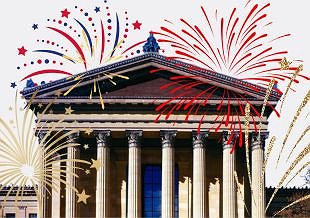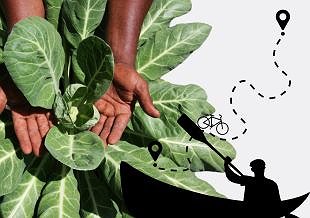Go Philly Go Visits the Wissahickon Environmental Center
Forests and meadows filled with native plants and animals existed within the Philadelphia city limits up until the early 20th century. Large swaths of Northeast and Northwest Philadelphia were farmland and natural areas. Once WWII ended, much of this land was grabbed up, and developed for returning service members and their families. This was the beginning of the suburbs, and development didn’t end at Philadelphia’s borders. It continues to this day, reaching farther into the surrounding counties.
The Wissahickon Environmental Center (WEC) is one of Philadelphia’s three environmental centers. It’s located at the far end of the Wissahickon Valley Park in Northwest Philadelphia on the edge of some of the last remaining meadow and forest in the city.
The area along the Wissahickon creek was once an integral part in the regions mill industry, with many mills located along the creek’s banks. In 1868, the city took control of this area as a way to protect Philadelphia’s water supply. The mills were replaced with natural areas, and today visitors can explore Philadelphia’s last covered bridge, sculptures and 50 miles of mixed-use trails along steep wooded hillsides and the Wissahickon creek.
The WEC is located in the Andorra neighborhood of Philadelphia. The park covers 200 acres, and is roughly located from Northwestern Ave to Bell’s Mill Rd and Forbidden Dr to Ridge Ave.
The area is accessible by Regional Rail, buses and the Wissahickon trail, so make sure you plan your route through Go Philly Go before heading out there. Go Philly Go took SEPTA route 27 and transferred to route 97 which drops you off at Germantown Ave. and Northwestern Ave. Head south on Northwestern Ave., past the horse stables, and you will find the drive leading up to the center or Tree House as it is nicknamed.
The grounds were formerly a nursery from the 1880’s to 1961, and the owner lived in the house before it became a park. Many non-native trees and plants grow there today. “We have some unusual plants. Some non-native but also native (plants),” said Trish Fries, environmental education program specialist. “Our little center here has a vibe to it. It’s very homey. It’s like a little house in the woods.”
Inside you will find turtles, fish, preserved animals, artifacts and historical pictures of the park. The center also hosts public programs, student educational programs and summer camps. You will find hikers, dog walkers and equestrians there, but mountain biking is prohibited along the environmental center’s trails.
The house which became the WEC was built next to a large tree over a century ago, and over time a porch, roof and finally an enclosure were all built around the giant sycamore. You can see pictures of the progression inside the center. The tree has been removed, but today visitors can step out onto the renovated back porch and see a preserved section of the tree in the spot where it once grew.
According to Fries, The woods are a typical PA forest with beech, oak and maple trees. The oldest beech tree in Pennsylvania, known as the giant beech tree, is a short walk from the center. Hikers can also explore the Andorra meadow, one of the last remaining natural areas in the city. “We have a meadow, which is gorgeous this time of year,” Fries said. “Between the reddish meadow grasses and some of the trees that are going to be changing colors, it’s absolutely beautiful.” Visitors can loop around the meadow, and through the forest on a two mile trail.
The center is somewhat isolated, and can be confusing to get to. Fries sees this as a challenge and a benefit. “One of our biggest challenges is people finding us,” Fries said. “The nice thing about this area is it’s not as well known as hiking Forbidden drive. If it’s a busy saturday on forbidden drive it’s nice and quiet up here.”
According to Fries, the meadow underwent a restoration project in 2012 to get rid of invasive plants, and reclaim some of the meadow.
“What happens in nature is the meadows tend to fill in with successions of plants, so we didn’t have as much meadow land as we would have 100 years ago. In order to help bird species that like meadows, we had some funding from the forest service to open up some meadow space again,” Fries said. “We got rid of alot of invasive plants, and it looks completely different. It’s really pretty.”
Fries also says the money also went to updating the trails which had initially followed roads carved out by the nursery in the late 1800s. ‘We eliminated a lot of trails to make more habitats for animals, and (make it) a little easier to understand,” Fries said. “We still have some that are fairly rocky, but the (trails) that were built recently are well built.”
The newly renovated meadow has become a natural habitat for birds, and is attracting birdwatchers to an area not usually thought of as a place to view wildlife. “It’s a big birding location. A lot of birders are finding us here, especially the meadow,” Fries said.
The area along the Wissahickon Gorge has some of the best natural beauty within the city limits of Philadelphia. “People are so shocked that the whole Wissahickon Valley is in Philadelphia,” Fries said. There is no biking along the trails at the center, but most of the Wissahickon Valley Park is bike friendly, so before you ride out there, make sure you plan your trip using Go Philly Go!
Wissahickon Environmental Center
300 W. Northwestern Ave. 19118
Monday to Friday 8am to 4pm
Follow their Facebook page for upcoming events


